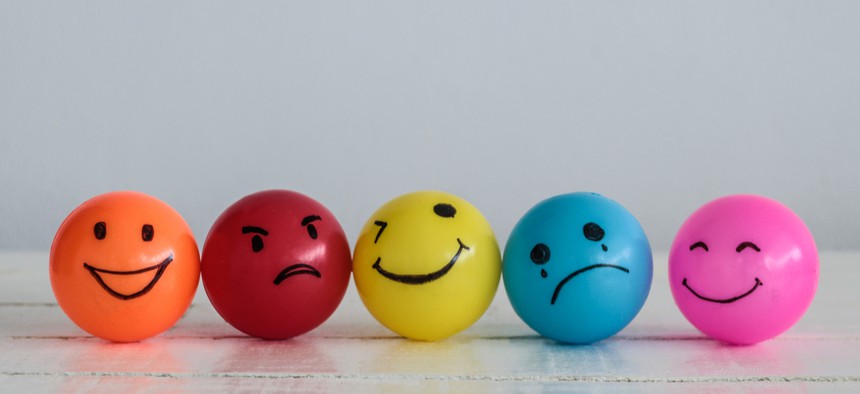Emotionally Intelligent Bosses Can Bring Out Your Creativity

Selenophile/Shutterstock.com
Employees with emotionally intelligent supervisors mentioned being happy three times more often than being stressed.
Bosses who act in ways associated with emotional intelligence foster happier, more creative employees, according to a new study.
In a survey of close to 15,000 people across the United States, researchers found that emotionally intelligent supervisors—managers who read and acknowledged employees’ emotions, helped them channel feelings, inspired enthusiasm, and capably managed their own emotions—had employees who were happier, more creative, and who perceived more opportunities for growth.
Just as there are tests for measuring intelligence, there are tests for emotional intelligence. The first and most widely used, the Mayer-Salovey-Caruso Emotional Intelligence Test, measures four branches of emotional intelligence: perceiving emotions, using emotions to help thinking, understanding emotions, and managing emotions.
“We saw dramatic differences in how people portray their work based on whether they described their supervisor as emotionally intelligent,” says Zorana Ivcevic, a research scientist at the Yale University’s Center for Emotional Intelligence.
In the Qualtrics survey, conducted in 2017, employees with emotionally intelligent supervisors mentioned being happy three times more often than being stressed. By contrast, those with supervisors who did not show emotional intelligence most often says they were frustrated, stressed, and even angry.
Survey participants were asked over 20 questions related to their feeling about work, their supervisor’s behavior, their opportunities for career growth, and work-related creativity and innovation. Questions included: How often did your supervisor notice if someone was feeling upset about a work decision? How often did your supervisor generate enthusiasm to motivate others? And, which specific emotions did you experience most frequently because of your specific tasks and responsibilities?
Researchers also asked participants to describe how they felt at work, both in their own words and by drawing from a list of 23 emotions. They rated how often they experienced each feeling.
Finally, researchers asked to what extent employees felt that they had opportunities to grow and make progress at work and how often were creative engaged.
The large sample size allowed researchers to create two extreme groups—a top tier comprised of the 25% of supervisors described as having high emotionally intelligent behavior and a bottom tier comprised of the 25% described as having low emotionally intelligent behavior.
The researchers found that among employees with supervisors showing little emotional intelligence, 70% of their primary feelings about work were negative. In contrast, among employees with supervisors showing high emotionally intelligent behavior, nearly two-thirds of the words they used to describe work were positive.
“With high emotionally intelligent supervisors, employees appear to be intrinsically motivated,” Ivcevic says. “They are challenged and fulfilled. That is in sharp contrast to the experience of employees with supervisors who don’t act in emotionally intelligent ways. They are upset and unhappy at work. They mention being angry—aggravated, irritated, and mad, as well as underappreciated and unappreciated.”
Employees whose supervisors act in emotionally intelligent ways are also more creative, the study shows, contributing new ideas or original ways of achieving work goals.
Creativity is a particularly important attribute in the modern workforce because it can’t be easily computerized and because it’s necessary for driving innovation, Ivcevic says.
She emphasizes that emotionally intelligent bosses aren’t necessarily optimistic or upbeat. But they recognize that employees can’t “leave their emotions at the door,” and they make efforts to see circumstances from the worker’s point of view.
This article was originally published in Futurity. It has been republished under the Attribution 4.0 International license.





